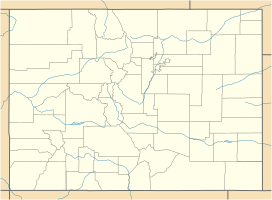La Garita Caldera
| La Garita Caldera | |
|---|---|

Volcanic ash formations of La Garita Caldera, looking northeast (Wheeler Geologic Monument).
|
|
| Highest point | |
| Coordinates | 37°45′23″N 106°56′03″W / 37.75639°N 106.93417°WCoordinates: 37°45′23″N 106°56′03″W / 37.75639°N 106.93417°W |
| Geography | |
| Location | Mineral County, Colorado, US, near Creede |
| Parent range | San Juan Mountains |
| Geology | |
| Mountain type | Caldera |
| Last eruption | 26.3 Ma (Fish Canyon Tuff 27.8 Ma) |
La Garita Caldera is a large volcanic caldera located in the San Juan volcanic field in the San Juan Mountains near the town of Creede in southwestern Colorado, United States. It is west of La Garita, Colorado. The eruption that created the La Garita Caldera is among the largest known volcanic eruptions in Earth's history.
The La Garita Caldera is one of a number of calderas that formed during a massive ignimbrite flare-up in Colorado, Utah and Nevada from 40–18 million years ago, and was the site of massive eruptions about 28.01±0.04 million years ago, during the Oligocene Epoch.
The area devastated by the La Garita eruption is thought to have covered a significant portion of what is now Colorado. The deposit, known as the Fish Canyon Tuff, covered at least 30,000 km2 (11,000 miles2). Its average thickness is 100 m. The eruption might have formed a large-area ash-fall, but none has yet been identified.
The scale of La Garita volcanism was the second greatest of the Cenozoic Era. The resulting Fish Canyon Tuff has a volume of approximately 1,200 cubic miles (5,000 km3), rating it an 8 on the Volcanic Explosivity Index. This is enough material to fill Lake Michigan. By comparison, the May 18, 1980, eruption of Mt. St. Helens was 0.25 cubic miles (1.0 km3) in volume.
...
Wikipedia

